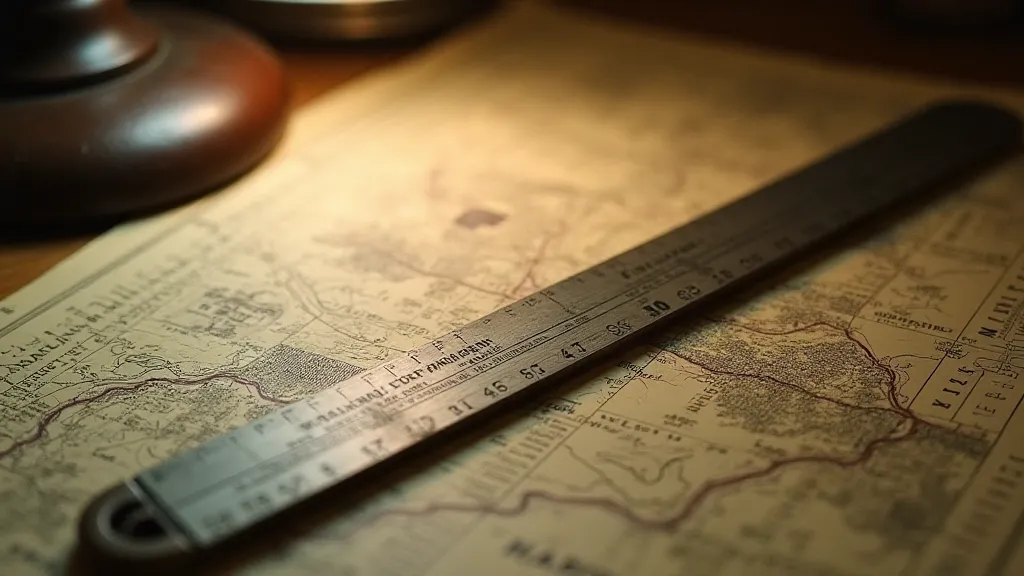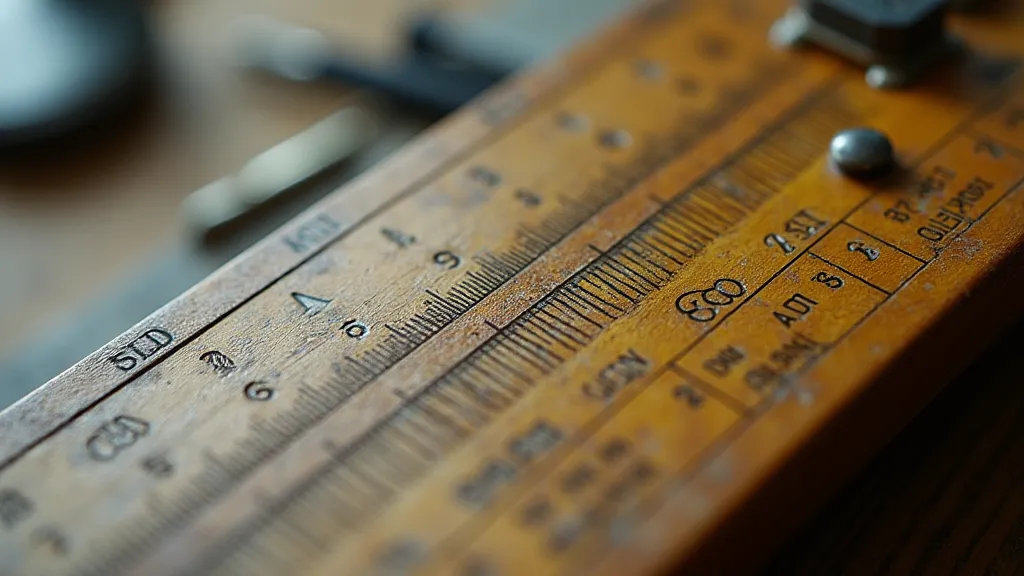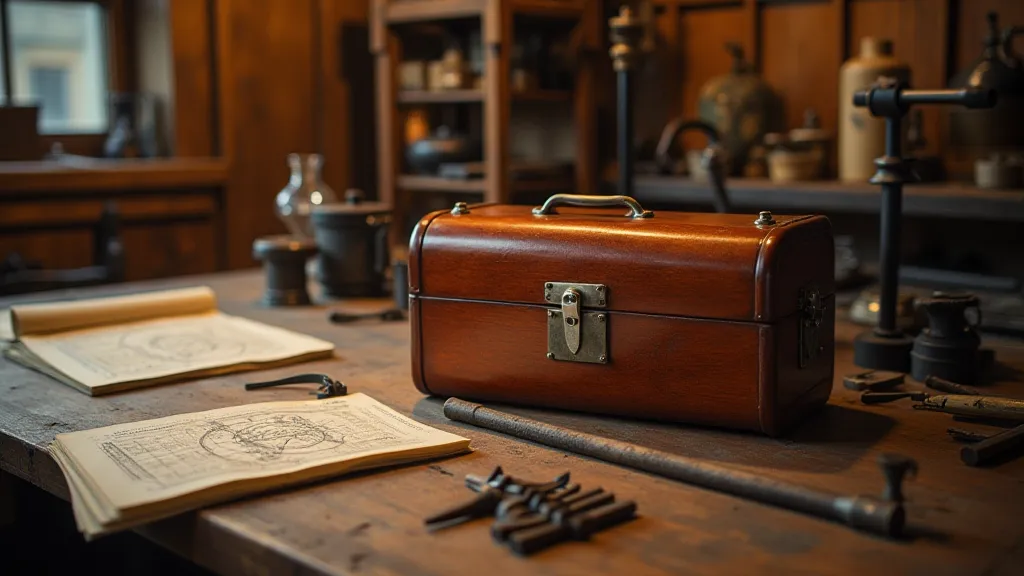The Cartographer's Compass: Aligning Your Collection with Historical Significance
There's a quiet dignity to an antique slide rule. Not the flashy charisma of a modern smartphone, but a steadfast, almost stoic presence. Holding one in your hand, feeling the cool, smooth Bakelite or the heft of mahogany, isn’t just experiencing an object; it's touching a tangible link to a time when human ingenuity and meticulous calculation were the bedrock of progress. For the slide rule collector, it’s more than a hobby; it's a pilgrimage through history, a quest to understand the minds that shaped our world.
My own fascination began unexpectedly. Years ago, clearing out my grandfather’s attic, I unearthed a Pickett Model N3. It wasn't pristine; the markings were faded, and a few scales were scratched. But the sheer *presence* of it captivated me. He’s been a structural engineer for most of his life, so the slide rule seemed appropriate. I learned later he's used the same one for nearly 50 years. It sparked a desire to understand not just how it worked, but *why* it existed, and the stories it held within its scales.
The Genesis of Precision: Slide Rules in the Age of Expansion
The slide rule isn't a sudden invention; it’s the culmination of centuries of effort to simplify complex calculations. While its direct ancestry can be traced to Napier’s Bones in the 17th century, the true slide rule as we recognize it emerged in the 19th century. The Industrial Revolution demanded precision – railroads needed accurate surveying, bridges required meticulous load calculations, and burgeoning industries needed to optimize production processes. The slide rule became an indispensable tool for engineers, architects, scientists, and mathematicians, allowing them to tackle problems that would have been utterly impossible to solve manually in a reasonable timeframe.
Imagine the surveyor charting a new railway line across vast and challenging terrain. Their slide rule would be their constant companion, calculating gradients, distances, and angles with a precision that was crucial for the project’s success. Consider the naval architect designing a new clipper ship, relying on the slide rule to optimize hull shapes and calculate stability. These weren’t simply calculations; they were acts of creation, powered by this elegant, mechanical device.

Beyond the Scales: Understanding Manufacturing and Craftsmanship
Collecting slide rules isn't just about accumulating objects; it's about appreciating the craftsmanship that went into their creation. Early slide rules, especially those from the late 19th and early 20th centuries, were often made with incredible attention to detail. Mahogany, rosewood, and other fine woods were painstakingly machined, and the scales were engraved with remarkable precision. Even the metal components, like the runners and cursors, were often hand-finished.
Companies like Pickett, Fuller & Lovell, Regress, and Eberhard Faber became synonymous with quality and reliability. The Pickett scales, renowned for their accuracy and durability, are particularly sought after by collectors. They were made using photolithography, a process that allowed for incredibly precise duplication of the scales. The color schemes, fonts, and scale layouts varied between manufacturers, creating a fascinating spectrum of aesthetic choices. The differences in quality can be noticeable; the feel of a well-made slide rule – the smoothness of the runner, the crispness of the markings – is a testament to the pride and skill of the craftsmen who made it.
Consider the intricacies of scale design. The “C” scale, representing multiplication, is the most fundamental. But beyond that lie a host of specialized scales: the “D” scale for reciprocals, the “K” scale for squares and square roots, and the “L” scale for logarithms. Each scale represented a different mathematical operation, and the clever arrangement of these scales allowed engineers to solve a wide range of problems.
The Silent Revolution: Slide Rules and Landmark Projects
The slide rule played a vital role in countless landmark engineering projects. The Golden Gate Bridge, the Apollo space program, the Panama Canal – all were conceived and built with the assistance of slide rules. While modern computers have rendered them largely obsolete for day-to-day calculations, the slide rule’s legacy endures as a symbol of human ingenuity and problem-solving skills.
Imagine the engineers working on the Apollo program, calculating trajectories and orbital mechanics with the aid of slide rules. They were dealing with incredibly complex calculations, but they did so with the tools available to them at the time. The slide rule wasn't just a calculation device; it was a symbol of their commitment to precision and innovation.

Restoration and Preservation: Respecting History
Restoring a slide rule is a delicate process. Aggressive cleaning or modifications can diminish its value and historical significance. The goal is to preserve the object’s integrity while addressing any immediate issues, like loose runners or faded markings. Often, simply cleaning the slide rule with a soft cloth and mild soap is sufficient.
Some collectors specialize in specific manufacturers or scale configurations. Others focus on preserving the original case and accessories, which can add to the slide rule’s value and historical context. The real reward isn't just possessing a beautiful object, but understanding its story and appreciating the human effort that went into its creation.
More Than Just a Tool: A Connection to the Past
Collecting slide rules isn't simply about accumulating artifacts. It’s about connecting with a time when human ingenuity and meticulous calculation were the driving forces behind progress. It’s about appreciating the craftsmanship that went into their creation and understanding the pivotal role they played in shaping our world. Each scratch, each faded marking, tells a story—a story of engineers solving problems, scientists making discoveries, and builders constructing the infrastructure that defines our modern society.
My grandfather’s Pickett Model N3, now carefully cleaned and displayed on my desk, serves as a constant reminder of that connection. It's a tangible link to his career, to the era of slide rule calculations, and to the enduring human drive to understand and shape the world around us. It's a cartographer's compass, aligning your collection and your understanding with the historical significance of this remarkable tool.






